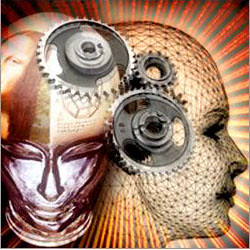 National Academies Press | The intelligence community (IC) faces the challenging task of analyzing extremely large amounts of information on cognitive neuroscience and neurotechnology, deciding which of that information has national security implications, and then assigning priorities for decision makers. It is also challenged to keep pace with rapid scientific advances that can only be understood through close and continuing collaboration with experts from the scientific community, from the corporate world, and from academia. The situation will become more complex as the volume of information continues to grow. The Committee on Military and Intelligence Methodology for Emergent Neurophysiological and Cognitive/Neural Science Research in the Next Two Decades was tasked by the Technology Warning Division of the Defense Intelligence Agency’s (DIA’s) Defense Warning Office to identify areas of cognitive neuroscience and related technologies that will develop over the next two decades and that could have military applications that might also be of interest to the IC. Specifically, the DIA asked the National Research Council (NRC) to perform the following tasks:
National Academies Press | The intelligence community (IC) faces the challenging task of analyzing extremely large amounts of information on cognitive neuroscience and neurotechnology, deciding which of that information has national security implications, and then assigning priorities for decision makers. It is also challenged to keep pace with rapid scientific advances that can only be understood through close and continuing collaboration with experts from the scientific community, from the corporate world, and from academia. The situation will become more complex as the volume of information continues to grow. The Committee on Military and Intelligence Methodology for Emergent Neurophysiological and Cognitive/Neural Science Research in the Next Two Decades was tasked by the Technology Warning Division of the Defense Intelligence Agency’s (DIA’s) Defense Warning Office to identify areas of cognitive neuroscience and related technologies that will develop over the next two decades and that could have military applications that might also be of interest to the IC. Specifically, the DIA asked the National Research Council (NRC) to perform the following tasks:• Review the current state of today's work in neurophysiology and cognitive/neural science, select the manners in which this work could be of interest to national security professionals, and trends for future warfighting applications that may warrant continued analysis and tracking by the intelligence community,
• Use the technology warning methodology developed in the 2005 National Research Council report Avoiding Surprise in an Era of Global Technology Advances (NRC, 2005) to assess the health, rate of development, and degree of innovation in the neurophysiology and cognitive/neural science research areas of interest, and
 • Amplify the technology warning methodology to illustrate the ways in which neurophysiological and cognitive/neural research conducted in selected countries may affect committee assessments.
• Amplify the technology warning methodology to illustrate the ways in which neurophysiological and cognitive/neural research conducted in selected countries may affect committee assessments.The label “cognitive” in the title and elsewhere in this report is used in a broad sense, unless specifically noted otherwise in the report itself, to refer to psychological and physiological processes underlying human information processing, emotion, motivation, social influence, and development. Hence, it includes contributions from behavioral and social science disciplines as well as contributing disciplines such as philosophy, mathematics, computer science, and linguistics. The label “neuroscience” is also used in a broad sense (unless specified otherwise) and includes the study of the central nervous system (e.g., brain) and somatic, autonomic, and neuroendocrine processes.
This summary includes the committee’s key findings and recommendations, numbered to facilitate access to related text in Chapters 2-5, which also include additional findings.


0 comments:
Post a Comment